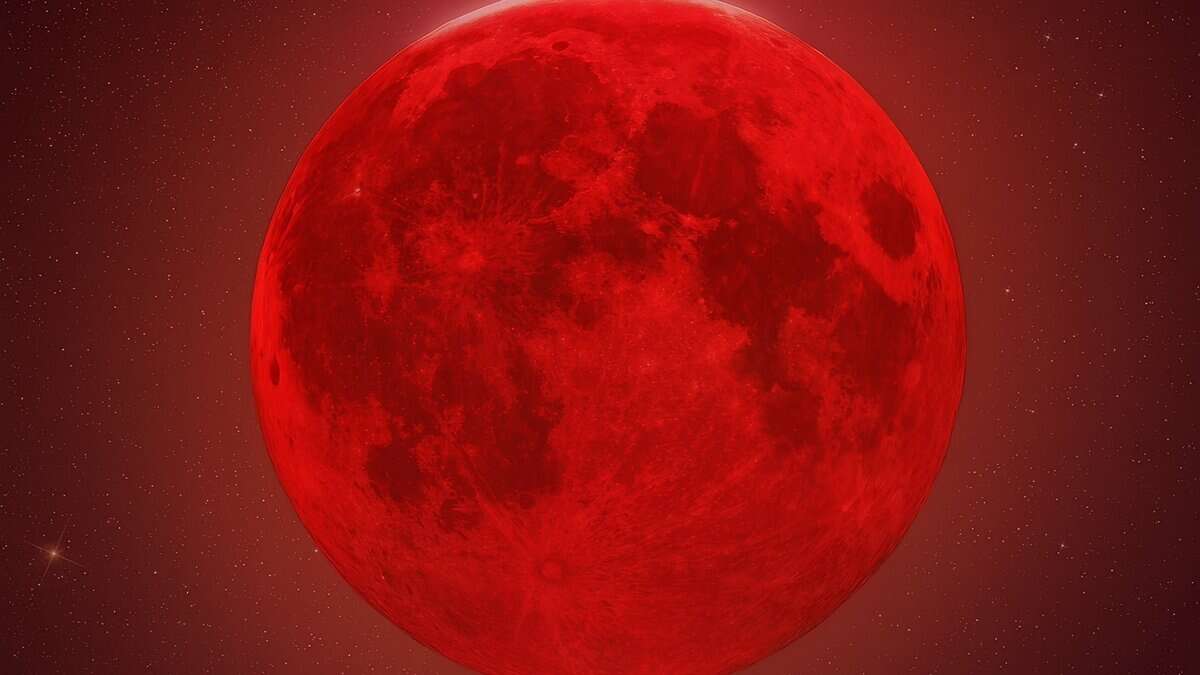
A rare total lunar eclipse will be visible on Sunday, September 7, across Saudi Arabia, the United Arab Emirates (UAE), and much of the Arab world. The celestial event, often called a “blood moon,” will unfold in several stages — penumbral, partial, and total — before reaching its peak and fading away.
The phenomenon will also appear in Asia, Australia, and parts of Europe and Africa, making it one of the most widely observed eclipses in recent years.
Timings in Saudi Arabia and UAE
- In Saudi Arabia, the moon will enter Earth’s shadow at 6:28 pm, with the partial eclipse beginning at 7:27 pm. Totality will last from 8:31 pm to 9:53 pm, and the spectacle will end by 11:55 pm.
- In the UAE, the eclipse starts at 7:28 pm, peaks at 10:12 pm, and concludes just before 1 am on Monday, September 8.
Timings across Arab countries
| Country | City | Start penumbral | Start partial | Start total | Peak | End total | End partial | End penumbral |
|---|---|---|---|---|---|---|---|---|
| Saudi Arabia | Riyadh | 18:28 | 19:27 | 20:31 | 21:12 | 21:53 | 22:57 | 23:55 |
| UAE | Abu Dhabi | 19:28 | 20:27 | 21:31 | 22:12 | 22:53 | 23:57 | 00:55 |
| Iraq | Baghdad | 18:28 | 19:27 | 20:31 | 21:12 | 21:53 | 22:57 | 23:55 |
| Jordan | Amman | 18:28 | 19:27 | 20:31 | 21:12 | 21:53 | 22:57 | 23:55 |
| Egypt | Cairo | 18:28 | 19:27 | 20:31 | 21:12 | 21:53 | 22:57 | 23:55 |
| Oman | Muscat | 19:28 | 20:27 | 21:31 | 22:12 | 22:53 | 23:57 | 00:55 |
| Sudan | Khartoum | 17:28 | 18:27 | 19:31 | 20:12 | 20:53 | 21:57 | 22:55 |
| Qatar | Doha | 18:28 | 19:27 | 20:31 | 21:12 | 21:53 | 22:57 | 23:55 |
| Bahrain | Manama | 18:28 | 19:27 | 20:31 | 21:12 | 21:53 | 22:57 | 23:55 |
| Kuwait | Kuwait City | 18:28 | 19:27 | 20:31 | 21:12 | 21:53 | 22:57 | 23:55 |
A rare cosmic display
The total phase will last around 82 minutes, ranking among the longest in recent years.
Astronomers explain that the moon’s red glow occurs when Earth blocks direct sunlight, filtering it through the atmosphere so that only red light reaches the lunar surface. The exact shade depends on atmospheric clarity: cleaner skies create a brighter copper tone, while pollution or dust can darken it.
Safe to view
Unlike solar eclipses, no protective glasses are required; the lunar eclipse can be safely enjoyed with the naked eye. Millions of people worldwide are expected to witness part of the event, with nearly three-quarters of the global population within the viewing zone.
Scientific monitoring
In Saudi Arabia, King Abdulaziz City for Science and Technology (KACST) will track the eclipse through its observatories. Dr Zaki Al-Mostafa noted that documenting such phenomena enhances public engagement with astronomy and highlights the precision of celestial alignments, the Saudi Press Agency (SPA) reported.
Religious observances
The eclipse prayer is a confirmed Sunnah of the Prophet Muhammad (PBUH), consisting of two rak’ahs with extended recitation, bowing, and prostration.
Authorities across the Arab world have called for Muslims to perform the eclipse prayer. The Saudi Ministry of Islamic Affairs instructed mosques to hold the prayer during the event, with similar guidance issued in the UAE, Qatar, Bahrain, Kuwait, and Jordan.
A night to remember
Tonight’s blood moon is the most significant since 2022, offering a rare chance to witness Earth’s shadow transform the full moon into a glowing red orb — a spectacle expected to captivate skywatchers across the region and beyond.



